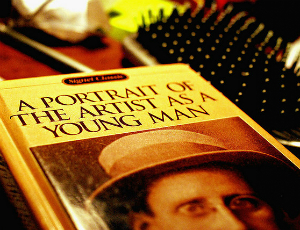Kavalier and Clay, the main characters in this year’s One Book, One Chicago selection, create larger-than-life comic book heroes like the Escapist. But in many of my favorite novels, creators themselves are the heroes, especially young artists struggling to find their way. Willa Cather once characterized them as the “hungry boys and girls who tramp the streets of every city, recognizable by their pride and discontent, who are the Future, and who possess the treasure of creative power.”
That’s a line from Cather’s novel The Song of the Lark, whose heroine, Thea Kronborg, comes to Chicago to study music. An unsentimental portrait of the artist as a young woman, the novel charts Thea’s struggles and growth from her provincial hometown to the harsh streets and music studios of Chicago and, ultimately, the concert stage.
The Song of the Lark is available in other formats.
This is the book I want to press into the hands of young musicians as they lug their instruments across el platforms and streets--it gets so much right. Favorite sections include "Stupid Faces," in which Thea rails against the moneyed but common voice students she accompanies on the piano (“So many grinning stupid faces. . . . She was getting tired of the human countenance”) and her first Chicago Symphony Orchestra concert, a revelation that the noisy city outside the concert hall threatens to snatch away.
The most famous novel about an artist is James Joyce’s autobiographical A Portrait of the Artist as A Young Man. Its hero is Stephen Dedalus, an aspiring writer attuned to words and language from an early age. Born in Ireland to a loving Catholic family, Stephen is ultimately torn between traditional values and his desire to experience the fullness of life and to become a writer—all chronicled in Joyce’s singular style.
A Portrait of the Artist as a Young Man is available in other formats.
Like Stephen Dedalus, Asher Lev, the young painter hero in Chaim Potok’s My Name Is Asher Lev, is torn between his community and his need to create. Raised in an insular Hasidic Jewish neighborhood following World War II, Asher is the son of a devoted mother and a pillar-of-the-community father who sees Asher's art as “foolishness” and worse. Can Asher, who becomes famous for his Brooklyn Crucifixion, stay true to his artistic vision without alienating those he loves? Potok, like Cather and Joyce before him, understands the losses as well as the triumphs of a life devoted to art.
These are just three of the many fine novels about artists. Feel free to chime in with your own favorites.




Add a comment to: Artists as Heroes in Fiction